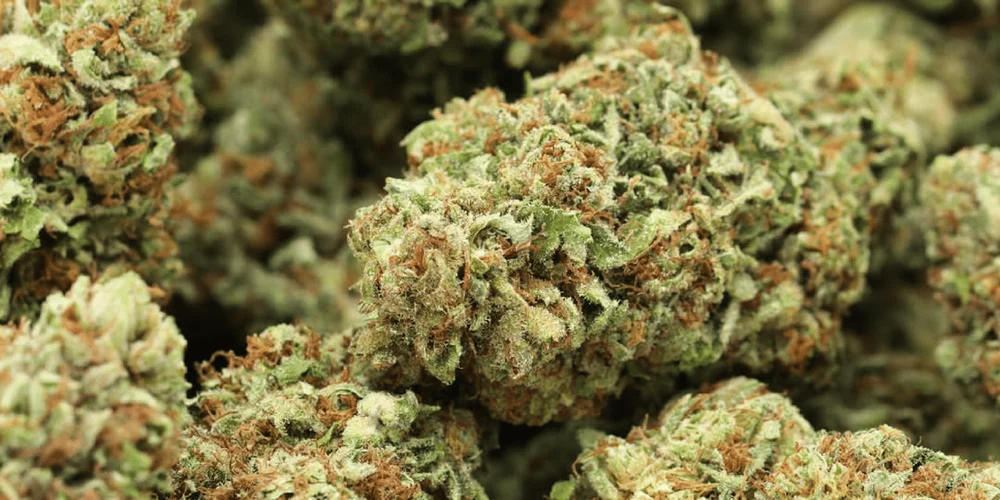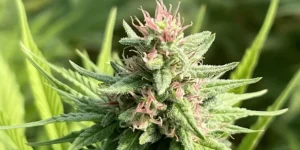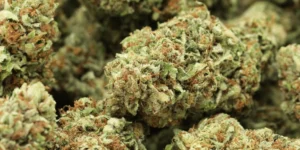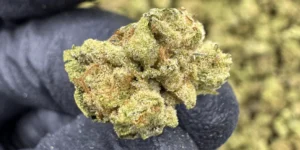Key Takeaways:
- The Smell Is Natural: The strong weed-like smell of THCA flower is normal due to the terpene content and not an indication of psychoactivity unless heated.
- Federal Compliance Matters: Gold CBD provides THCA flower that complies with federal law, even if its aroma closely resembles traditional cannabis strains.
- Proper Storage Preserves Aroma: Keeping THCA flower in airtight, UV-protected containers in cool, dark spaces is essential to preserving its natural, rich fragrance over time.
Opening a fresh jar of THCA flower might spark more than just curiosity—it may raise questions. The aroma is often pungent, earthy, and undeniably familiar. But when a product is federally legal and non-psychoactive unless heated, does it still carry the same scent profile as traditional cannabis? For many, the nose knows—but understanding why it smells that way takes a deeper dive into the science of hemp flower.
At Gold CBD, we specialize in premium, dispensary-quality THCA hemp flower. Our strains are lab-tested, federally compliant, and highly cultivated for those who value clarity, aroma, and a true connoisseur’s experience. From exotic indoor cuts to top-shelf classics, we take pride in delivering terpene-rich flower that reflects our commitment to transparency and quality.
In this piece, we’re addressing the often-asked question: Does THCA smell like weed? We’ll explore how aroma works in hemp, what influences it, and why it matters, especially for those choosing flowers for potency and peace of mind.
What Is THCA And How Does It Work?
THCA, or tetrahydrocannabinolic acid, is a naturally occurring compound found in raw cannabis and hemp plants. It’s the precursor to THC, the well-known psychoactive cannabinoid. But here’s the key distinction: THCA is non-psychoactive except when heated. This means consuming raw THCA flower, through methods like juicing or using it in topical form, does not produce the same intoxicating effects associated with THC.
When THCA is exposed to heat through smoking, vaping, or baking, a process called decarboxylation occurs. This transforms THCA into THC, unlocking its psychoactive potential. Until that moment, THCA remains a raw, acidic cannabinoid, often prized for its purity and alignment with wellness-forward lifestyles.
Gold CBD offers THCA flower cultivated with dispensary-grade care and tested for compliance with federal guidelines. We aim to help individuals make educated choices rooted in quality, transparency, and a better understanding of what they’re using.
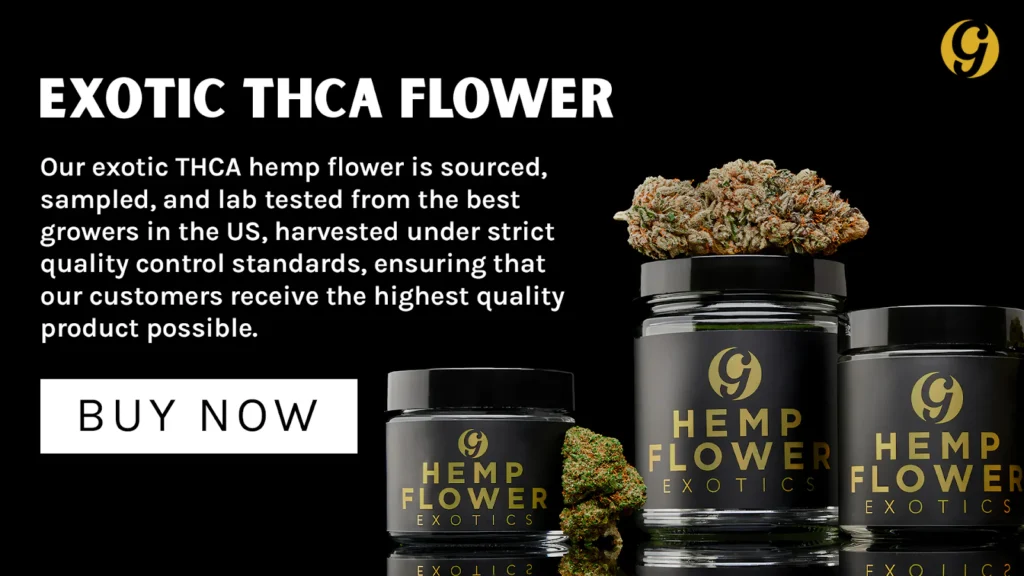
Does THCA Smell Like Weed?
Yes, THCA flower often smells like weed, and there’s a good reason. The aroma comes not from the cannabinoid content itself, but from compounds called terpenes. These naturally occurring molecules are responsible for the wide range of scents in hemp and cannabis, from citrus and pine to skunky or earthy tones.
Even though THCA flower is non-psychoactive unless heated, it’s still derived from the same plant species as traditional cannabis. The terpene profile is similar, especially in high-quality, dispensary-style cultivars like Gold CBD’s premium selection. These terpenes may include myrcene, limonene, caryophyllene, and others, each contributing to the flower’s complex, unmistakable scent.
So when someone asks, “Does THCA smell like weed?” the honest answer is: perhaps quite a bit. While it doesn’t produce psychoactive effects in its raw form, its scent may closely mimic that of THC-rich strains, due to their shared botanical lineage.
Why The Smell Matters: Perception, Legality, And Wellness
The scent of THCA flower plays a bigger role than most people expect. While its rich, cannabis-like aroma is a natural result of its terpene profile, it also shapes how people perceive, accept, or even misunderstand the product. Let’s explore why this scent matters in everyday life, particularly when it comes to education, legal understanding, and your overall wellness experience:
Public Perception Of THCA Flower
Because THCA flower may smell like traditional weed, people unfamiliar with hemp products may misidentify it as something illegal. This could lead to confusion in social or public settings, especially where cannabis use is restricted or stigmatized. Understanding and educating others about the legal and non-psychoactive nature of THCA can help bridge that gap.
Navigating The Legal Landscape
Even though THCA is federally legal when derived from hemp and compliant with the 2018 Farm Bill, its scent might suggest otherwise to the untrained eye—or nose. Law enforcement and institutions may not always distinguish between THCA and THC without proper testing. This is why sourcing from a reputable provider like Gold CBD, which offers full lab transparency, is essential for peace of mind.
Scent And The Wellness Experience
For many, scent is part of the ritual and therapeutic enjoyment of using hemp flower. Terpenes may enhance the overall experience by contributing to the flower’s depth, richness, and personal preference, even with no psychoactive effects. Knowing what to expect helps individuals choose strains that align with their lifestyle and comfort level.

Factors That Influence The Aroma Of THCA Flower
THCA flower may smell like weed due to more than just the strain name. From how it’s grown to how it’s stored, several elements shape the terpene profile and the intensity of the scent. Here’s a closer look at what determines the way your THCA flower smells:
- Cultivation Method: Indoor-grown THCA flower typically has a more intense aroma due to controlled environments that allow terpenes to fully develop. Factors like lighting, temperature, and humidity are carefully managed to optimize terpene production. This is why many of the most aromatic strains—like those in Gold CBD’s Exotic Indoor category—come from indoor grows.
- Curing and Drying Techniques: Post-harvesting is just as important as cultivation. Proper drying and curing lock in the terpene content, enhancing aroma and shelf stability. Rushed or improper curing may result in a flat or hay-like smell, which reduces the flower’s sensory quality.
- Genetic Profile of the Strain: Every THCA flower strain has its natural terpene blueprint. Due to their unique genetic makeup, some strains are naturally more pungent, citrusy, or earthy. Understanding these profiles helps users choose a flower that matches their aroma preferences without guessing.
- Storage Conditions: How you store your THCA flower after purchase may also influence its scent over time. Heat, light, or moisture exposure may degrade terpene content and change the aroma. Airtight, UV-resistant containers in cool environments are ideal for preserving the flower’s natural fragrance.
How To Choose THCA Flower Based On Scent And Quality
Choosing the right THCA flower involves more than just reading a strain name or THC percentage. Aroma directly clues to the flower’s freshness, terpene richness, and cultivation method. Here’s how to make informed choices based on scent and quality indicators:
- Start with the Aroma Profile: A rich, layered scent may indicate the flower has a robust terpene profile. Whether it’s citrusy, skunky, or sweet, a strong aroma often reflects careful cultivation and curing. If the flower lacks smell or seems flat, it may not have been stored or handled properly.
- Check for Lab Results and Terpene Content: Reliable providers, like Gold CBD, offer third-party lab testing that includes terpene profiles and THCA content. This information gives you more than cannabinoid levels—it helps predict flavor, scent, and experience. Always look for transparent sourcing and detailed test results before buying.
- Inspect Appearance and Trichome Coverage: While scent is a major cue, visual quality supports your decision. Look for flower with visible trichomes (crystal-like structures), dense buds, and minimal stems or leaves. These visual signs often align with strong aroma and high-quality genetics.
- Match the Scent to Your Personal Preferences: Some prefer fruity or sweet aromas, while others gravitate toward earthy or gassy tones. Your nose knows—use scent as a guide to find a flower that suits your lifestyle or intended use. And remember, the aroma doesn’t mean psychoactivity unless the product is heated.
Tips For Storing THCA Flower To Preserve Aroma
Keeping THCA flower fresh isn’t just about appearance—it’s also about maintaining the rich, complex aroma that defines a quality product. Proper storage protects delicate terpenes, ensuring the flower continues to smell vibrant even after weeks or months. Here’s how to store your THCA flower correctly and keep the scent you love:
Use Airtight, UV-Resistant Containers
Exposure to air and light may degrade terpenes, causing the flower to lose its distinct aroma over time. Airtight containers, especially those that block UV rays, help preserve the terpene profile by limiting environmental exposure. Glass jars with airtight seals are one of the most reliable options for long-term freshness.
Store In A Cool, Dark Place
Temperature swings and direct sunlight may break down cannabinoids and terpenes faster than you think. A consistently cool, dark space—like a cabinet or drawer—helps maintain the flower’s integrity. Avoid leaving THCA flower in hot cars, near windows, or anywhere heat builds up.
Avoid Excess Moisture Or Humidity
Moisture may alter the flower’s aroma and create an environment where mold could form. Keeping humidity levels balanced, ideally between 55%–62%, is key to protecting scent and overall quality. Humidity packs designed for cannabis storage are a simple tool to help maintain ideal conditions.
Limit Frequent Opening
Every time a jar is opened, the flower is exposed to fresh oxygen and moisture changes. While enjoying the aroma frequently is tempting, constant opening may lead to terpene degradation. Try to portion out small amounts for daily use while keeping the bulk safely sealed.
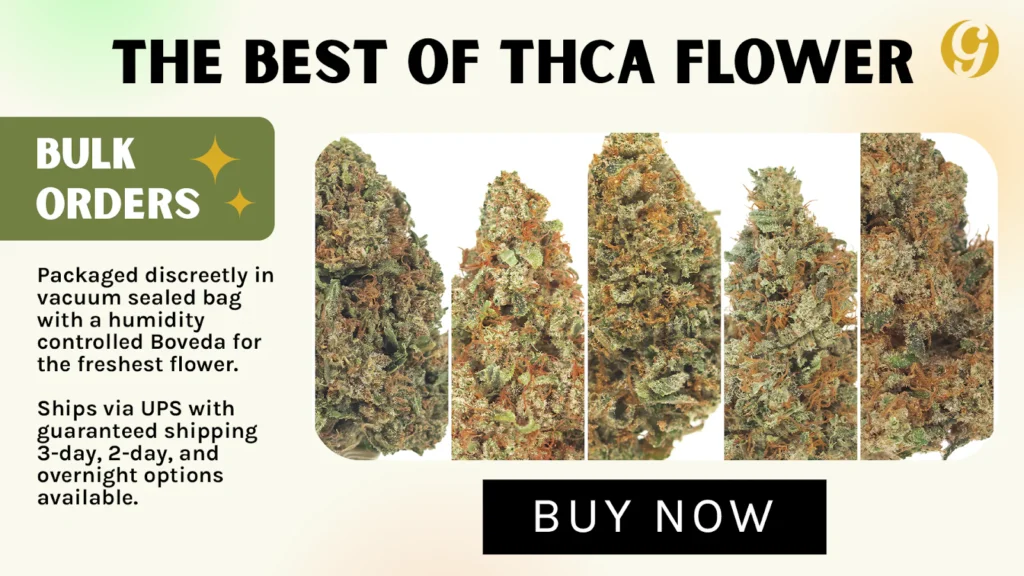
Final Thoughts
The scent of THCA flower isn’t just a side effect—it’s an essential part of the plant’s identity. Rooted in its terpene profile, the familiar aroma serves as a reminder that legality, potency, and experience are often more complex than they appear at first sniff. As THCA continues to bridge the worlds of wellness and cannabis culture, its rich, unmistakable fragrance invites consumers to look deeper, appreciate craftsmanship, and choose products that align with both their values and lifestyle.
Read also:
- THCP Vs. THCA How They Compare And What Sets Them Apart
- Is THCP Stronger Than THCA? Breaking Down The Differences
- Best Strain For Creativity: Unlock Your Imagination With These Cannabis Strains
Frequently Asked Questions About Does THCA Smell Like Weed
Can THCA flower smell stronger than regular weed?
Yes, some THCA strains may have an even more pronounced aroma because of high terpene content and careful indoor cultivation. This depends on the strain’s genetics and how it was grown and cured. Premium THCA flower from brands like Gold CBD often has a rich, complex scent.
Why does THCA flower sometimes smell fruity or sweet?
Different terpene combinations may create fruity, sweet, or candy-like aromas in THCA flower. Strains like Rainbow Belts or Pink Runtz are good examples of this unique scent profile. It’s a natural part of the flower’s chemical makeup, not an artificial enhancement.
Will heating THCA flower change its smell?
Yes, when you heat THCA flower by smoking or vaping, the aroma may become more intense and shift slightly. This is because heating activates terpenes and decarboxylates THCA into THC. The fresh scent may become more pungent or earthy after heating.
How do terpenes impact the smell of THCA flower?
Terpenes are aromatic compounds that give THCA flower its distinct scents, ranging from citrus to pine to skunk. Each terpene contributes differently to the overall aroma experience; the more terpene-rich the flower, the stronger and more layered the smell.
Could THCA flower smell milder than regular THC flower?
Depending on how the flower was grown, cured, and stored. Some THCA strains may have a lighter scent if terpene preservation wasn’t prioritized. This is why sourcing flower from trusted providers like Gold CBD is important for aroma quality.
Does the smell of THCA flower affect its legal status?
No, aroma alone does not determine legality—THCA flower is judged by its chemical content, specifically THCA and THC percentages. Gold CBD follows federal guidelines, ensuring that its THCA flower remains compliant. However, the weed-like smell may create confusion without proper documentation.
Can the THCA flower’s aroma fade over time?
If THCA flower is not stored correctly, the aroma may weaken as terpenes degrade. Light, heat, and air exposure are the main culprits that cause scent loss. Proper storage practices help preserve both smell and overall flower quality.
Is there a way to make THCA flower smell stronger naturally?
Proper curing and careful storage may enhance or preserve the strong natural aroma of THCA flower. Some individuals use humidity control packs to maintain ideal conditions. However, artificially boosting scent is not recommended for federally compliant hemp products.
Why do some THCA strains have a more “gassy” smell?
The “gassy” scent comes from specific terpenes like myrcene and caryophyllene, which produce diesel-like or earthy notes. Strains bred for potency often exhibit this strong aroma.
Is it possible to find low-odor THCA flower?
Yes, certain strains may have a milder or subtler scent depending on their terpene makeup. Customers looking for a less noticeable aroma may choose strains that lean toward citrus or floral notes. Always review strain descriptions and lab results for terpene content before selecting.
Sources:
- Cannabis Cultivation – an overview | ScienceDirect Topics. (n.d.). Www.sciencedirect.com. https://www.sciencedirect.com/topics/agricultural-and-biological-sciences/cannabis-cultivation
- Ahsan, S. M., Md. Injamum-Ul-Hoque, Shifa Shaffique, Akhtar Ayoobi, Rahman, M. A., Rahman, M. M., & Choi, H. W. (2024). Illuminating Cannabis sativa L.: The Power of Light in Enhancing C. sativa Growth and Secondary Metabolite Production. Plants, 13(19), 2774–2774. https://doi.org/10.3390/plants13192774
- Das, P. C., Vista, A. R., Tabil, L. G., & Baik, O.-D. (2022). Postharvest Operations of Cannabis and Their Effect on Cannabinoid Content: A Review. Bioengineering, 9(8), 364. https://doi.org/10.3390/bioengineering9080364

